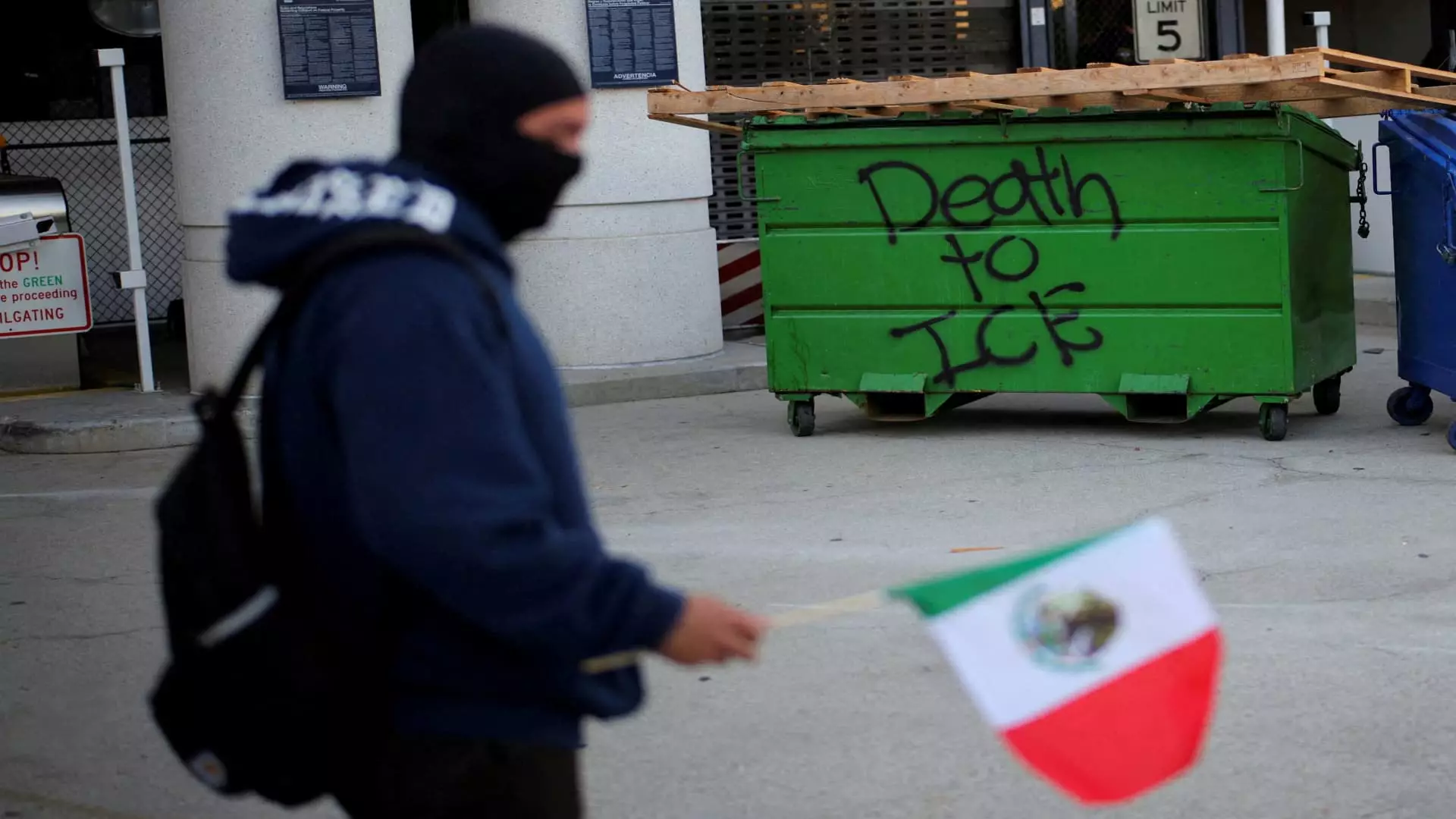In the heart of Los Angeles, a seismic clash unfolded as federal agents confronted demonstrators vehemently protesting immigration raids. This confrontation was not merely a local issue; it mirrored a national debate that has become increasingly charged. Following the latest crackdown by Immigration and Customs Enforcement (ICE), which left 44 individuals apprehended, tensions surged. The looming presence of elite federal law enforcement highlighted a troubling reality: that the streets of this diverse metropolis could devolve into battlegrounds over immigration policies that threaten the fabric of communities. A place predominantly populated by Hispanic and foreign-born residents was now a site of contempt, fear, and resolution.
This demonstration erupted on Friday night after federal agents instigated a series of arrests that many viewed as the administration’s harshest assault on immigrant rights. It showcased how rhetoric and reality spiraled to a breaking point. The demonstrators, some covered in masks and holding flags, engaged in a battle of wills against federal mandates that some equate with oppression. In this moment, the core frustrations and fears of many citizens bubbled to the surface—a potent mix of anger directed at a government that many feel has abandoned them.
The Rhetoric of Insurrection
Amidst this unrest, senior White House aide Stephen Miller described the protests as an “insurrection” against America’s sovereign laws. Such inflammatory language inflames tensions and suggests an alarming inability, or unwillingness, to engage in civil discourse. By labeling dissenters as insurrectionists, the administration seems intent on quelling legitimate grievances through vilification rather than constructive engagement. This approach is particularly troubling when one considers the societal implications of labeling vocal manifestation of dissent as an attack on the nation itself.
The Department of Homeland Security’s assertion that “1,000 rioters” were attacking federal buildings lacks the verification typically expected from governmental advisories. This ambiguity elicits a critical examination of how narratives are shaped—where do hyperbolic claims end and genuine concerns begin? As demonstrators spray-painted anti-ICE slogans and gathered outside jails, they expressed a collective sentiment: that their humanity cannot be reduced to mere statistics in a political agenda. The administration’s tactics of framing protests as violent insurgency only serve to deepen the divide, eroding trust between communities and authorities further.
The Political Chess Game
The intersection between a local community’s concern and a national agenda spills over into a political chess game. On one side of this divide sits the Democratic mayor of Los Angeles, Karen Bass, who stands defiantly against the immigration raids, declaring them to be an affront to public safety and community welfare. Her vehement stance underscores the increasing friction between Democratic-led cities and a Republican-led federal government committed to strict immigration enforcement. The irony is palpable: as Bass condemns the tactics of federal agents for sowing fear, the White House counters her statements as liberal overreach with claims that sanctuary cities are breeding grounds for violence against law enforcement.
Within this narrative, the LAPD straddles an uneasy line. While tasked with maintaining order during the protests, their explicit separation from immigration enforcement highlights a critical resistance to federal mandates among local authorities. It raises pivotal questions about the role of law enforcement in immigration matters: Are they agents of federal policy, or protectors of community interests? This dilemma encapsulates the broader, polarized landscape emerging across America—one that sees law enforcement caught in the crossfire between maintaining societal order and enforcing federal immigration law.
The Aftermath: A Call to Action or a Time of Reckoning?
As the dust settles from clashes, the implications continue to resonate within and beyond the boundaries of Los Angeles. The tensions are emblematic of a broader movement, one that seeks to redefine how America views immigration—a deeply ingrained part of its identity. The protests signal that many citizens are unwilling to silently persist in the face of perceived injustice. They are awakening to the reality that change is not merely requested; it is demanded through action.
In light of this upheaval, the call for a re-examination of immigration policies gains urgency. Numerous immigrants who arrived legally or are community pillars find themselves caught in the crosshairs of an administration hell-bent on tightening borders. These raids and subsequent protests exemplify not just a response to a localized issue, but an emblem of a more profound discontent simmering across the nation, challenging us to reconsider the human fabric that binds us all. It is a stark reminder that the fight for justice and liberty cannot be confined to a single narrative; rather, it is a collective struggle woven through the lives of countless individuals facing oppression.


Leave a Reply